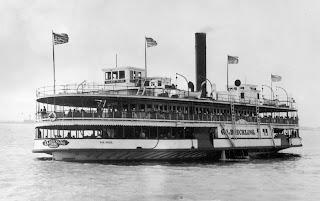 |
| Jim Thorpe (center) Clarence Childs (right) Indiana University 1913/1914 season James B. Childs Family Collection Rutherford B. Hayes Presidential Library and Museums
Jim Thorpe was born May 28, 1888 near Prague in Indian Territory (present day Oklahoma). He was the great great grandson of Chief Black Hawk. In 1950, sports writers and broadcasters voted him the greatest football player and the greatest American athlete of the first half of the 20th century.
He attended Haskell Institute in Lawrence, Kansas and the Carlisle Indian Industrial School in Pennsylvania. Carlisle, was founded during the Hayes administration as the first off -reservation school for Native Americans.
In 1911, he was voted first-string All American. Thorpe played football, baseball, basketball, and trained for the 1912 Olympics in track. Thorpe won the gold medal for both the decathlon and the pentathlon at the Stockholm Olympics. (He was later stripped of these medals when it was revealed he had played semi-professional baseball in 1909. They were not re-instated until after his death) |
Clarence Childs (left) Jim Thorpe (second left)
Indiana University 1913/1914
James B. Childs Collection
Rutherford B. Hayes Presidential Library and Museums
Indiana University 1913/1914
James B. Childs Collection
Rutherford B. Hayes Presidential Library and Museums
While training for the Olympics, Thorpe met Clarence Childs of Fremont, Ohio. Childs, a superb athlete in his own right, won the bronze medal in the hammer throw, missing the silver by less than an inch. After touring the U. S. and Europe with the Olympic team, Childs returned to Fremont and married Zella Sherard. He coached at Wooster College and then Indiana University. His assistant at Indiana was his Olympic team mate, the legendary Jim Thorpe.
According to the Library of Congress, Thorpe played baseball and football professionally from 1913 to 1929. He was the first president of the new American Professional Football Association that later became the NFL. He played football professionally until the age of forty-one. For two of those years he coached and played for the Oorang Indians, an all Native American franchise of LaRue, Ohio.
***************
Note: To learn more about the extraordinary life of soldier, athlete, Clarence Childs, read his diary or follow this link to the collection held by the Rutherford B. Hayes Presidential Library and Museums or read about him on Paper Trail.

















